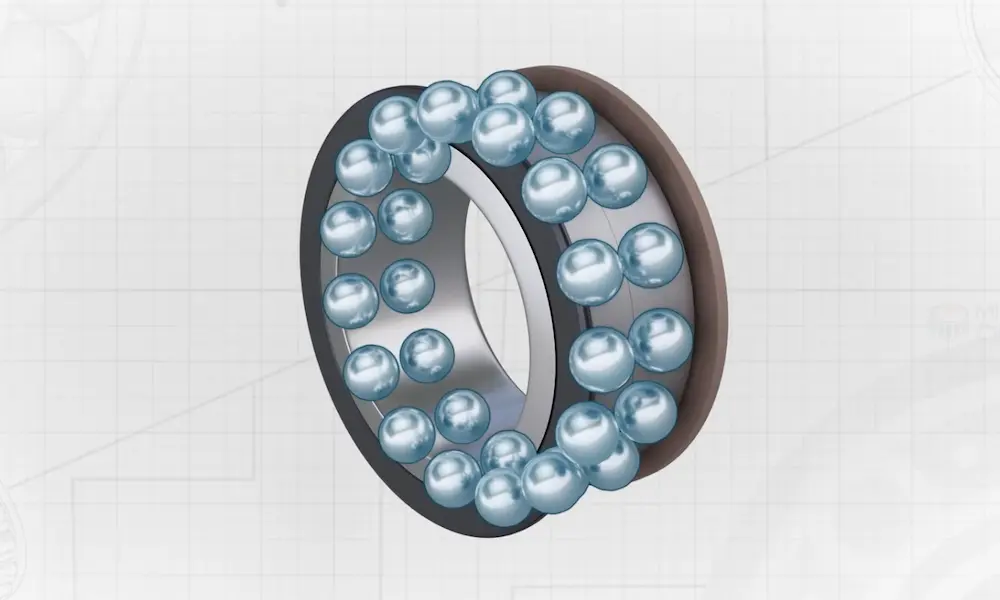Experiencing issues with your Subaru Forester? Common transmission problems like CVT chain slipping and valve body failure have been frustrating for many owners. Understanding these issues can help you find solutions faster and keep your Forester running smoothly. Stick around to explore what might be causing your transmission troubles and how other owners have tackled these challenges. Your road to a smoother drive might be just a few paragraphs away!
Understanding Subaru Forester Transmission Mechanics
The Subaru Forester often features the Lineartronic CVT, which stands for Continuously Variable Transmission. This type of transmission uses components like the torque converter and valve body solenoid to provide smooth and efficient power delivery. Understanding these parts helps you appreciate the technology that goes into making your Forester run smoothly.
Components of Subaru CVT Transmission
The Lineartronic CVT uses a belt-and-pulley system instead of traditional gears. This setup allows for seamless speed changes and improved fuel efficiency. The CVT is designed to adapt to driving conditions by adjusting the ratio continuously.
Benefits of CVT:
- Smooth Driving Experience: Eliminates gear shifts.
- Fuel Efficiency: Keeps the engine in an optimal range.
- Reduced Weight: Lighter than traditional systems.
Challenges:
- Complex Repair: Can be harder to fix than regular transmissions.
- Potential Slipping: Could happen if worn out or not maintained.
Having a clear plan for maintenance can keep your CVT in top shape.
Roles of the Torque Converter and Valve Body Solenoid
The torque converter connects the engine to the transmission. It allows your car to idle without stalling by multiplying engine torque.
Meanwhile, the valve body solenoid operates valves to regulate fluid flow in the transmission, affecting how smoothly your Forester shifts gears. Both parts play crucial roles in the overall performance of your CVT.
Torque Converter Highlights:
- Functionality: Transfers engine power without direct connection.
- Efficiency: Enhances low-speed performance.
Valve Body Solenoid Importance:
- Fluid Control: Manages hydraulic pressure.
- Shift Quality: Influences how smoothly your vehicle operates.
Regular checks on these components keep your Subaru running at its best.
Common Transmission Issues in Subaru Foresters
Subaru Foresters often encounter several transmission issues that owners should be aware of. These problems can affect the vehicle’s performance and reliability, especially if left unaddressed. Knowing the symptoms and causes can help you take action before significant damage occurs.
Symptoms of Transmission Failure
One early sign of transmission issues is delayed or rough shifting. You might notice hesitation when you try to change gears. This hesitation can lead to more significant problems if not addressed promptly.
Watch out for warning lights on your dashboard. These lights can often provide early warning signs of transmission failure.
It’s essential to recognize these symptoms so your Forester can shift smoothly. Addressing these problems early can help you avoid more costly repairs.
Overheating and Fluid-Related Problems
Transmission overheating is a common issue with the Subaru Forester. High temperatures can damage internal parts, leading to failure. One cause is the low transmission fluid, which cools and lubricates the system.
Check your transmission fluid regularly to ensure it’s at the right level. If the fluid looks dark or smells burnt, it’s time for a replacement.
Unusual Noises and Shifting Challenges
Unusual noises like whining or clunking can indicate transmission trouble. These sounds often occur when gears don’t engage smoothly, signaling wear or damage.
If you hear odd noises while driving, it’s crucial to investigate as soon as possible. Such problems can worsen over time, leading to more severe issues.
Difficulty shifting gears is another common problem. This may arise from mechanical wear or insufficient transmission fluid.
Addressing these signs early can prevent costly repairs and keep your Subaru Forester running smoothly on the road.
Maintaining Your Subaru’s Transmission Health
Keeping your Subaru’s transmission in good shape involves regular check-ups, monitoring fluid quality, and being alert to signs of trouble. Addressing these elements can help prevent significant repair bills down the road.
Regular Maintenance Schedule
Sticking to a regular maintenance schedule is crucial for your Subaru’s transmission health. Make sure to follow the manufacturer’s recommendations for servicing intervals. Often, this includes checking transmission fluid levels and replacing old fluid every 30,000 to 60,000 miles.
During maintenance, a mechanic can inspect the transmission for signs of wear and tear. This check-up might involve looking at the transmission oil pan and the filter. A clean filter helps keep the fluid clear of debris, which can lead to damage if left unchecked.
For peace of mind, consider creating a calendar or setting reminders for these important maintenance tasks. This way, you’ll stay on top of your Subaru’s needs and help ensure smoother operation.
Checking Fluid Levels and Quality
Regularly checking your Subaru’s transmission fluid is a simple way to avoid potential problems. Use the dipstick to check that the fluid level is within the recommended range. Low fluid can lead to overheating, which is particularly damaging in vehicles like the Subaru Forester where transmission overheating can be an issue.
The quality of the transmission fluid is just as important. Look at the color and sniff for any burnt smell. Healthy transmission fluid typically appears pink or red and shouldn’t have a foul odor. If it’s dark brown or black, it might be time for a change.
If you notice any issues with the fluid level or quality, it’s best to address them promptly. Taking your Subaru to a trusted mechanic for a fluid change can prevent more severe issues.
Spotting Potential Transmission Damage Early
Being alert to signs of transmission damage can save you from costly repairs. Listen for unusual noises like whining or clunking when the vehicle shifts gears, which may indicate problems. Also, pay attention to any delays or rough shifts when driving.
Another red flag is leaking fluid, often visible as puddles under your car. This could point to a seal or gasket problem within the transmission system.
Catch these problems early, and you may avoid more severe damage. Keep your mechanic in the loop if you notice anything unusual, and don’t hesitate to schedule an inspection for peace of mind.
Preventive Measures and Best Practices
To keep your Subaru Forester’s transmission in top shape, pay attention to choosing the right transmission fluid and staying updated on TCM software. These strategies help avoid common issues like overheating and faulty solenoids, enhancing the vehicle’s overall reliability.
Selecting the Right Transmission Fluid
Choosing the correct transmission fluid is crucial for your Subaru Forester. Using the wrong type can lead to problems such as overheating or inefficient gear shifting. Check your vehicle’s manual for the recommended type of fluid. It’s important to not only use the correct fluid but also to maintain regular checks and changes.
Factors to consider when selecting transmission fluid include its compatibility and properties. Look for fluid that provides efficient lubrication and can withstand various temperatures. Many drivers find synthetic transmission fluids beneficial due to their ability to work under extreme conditions and extend the life of the transmission.
Update on Transmission Control Module (TCM) Software
Updating the Transmission Control Module (TCM) software is essential for optimizing your vehicle’s performance. The TCM manages how your transmission operates, ensuring seamless gear shifts and reducing wear on transmission components.
Timely updates can address potential issues like faulty solenoids, which can cause jerky movements or strange noises. Visit your dealership to check if your TCM has the latest software. Regular updates often include improvements that can enhance fuel efficiency and extend the life of your transmission. It’s a preventive step that contributes to smoother driving and fewer headaches over the long term.















